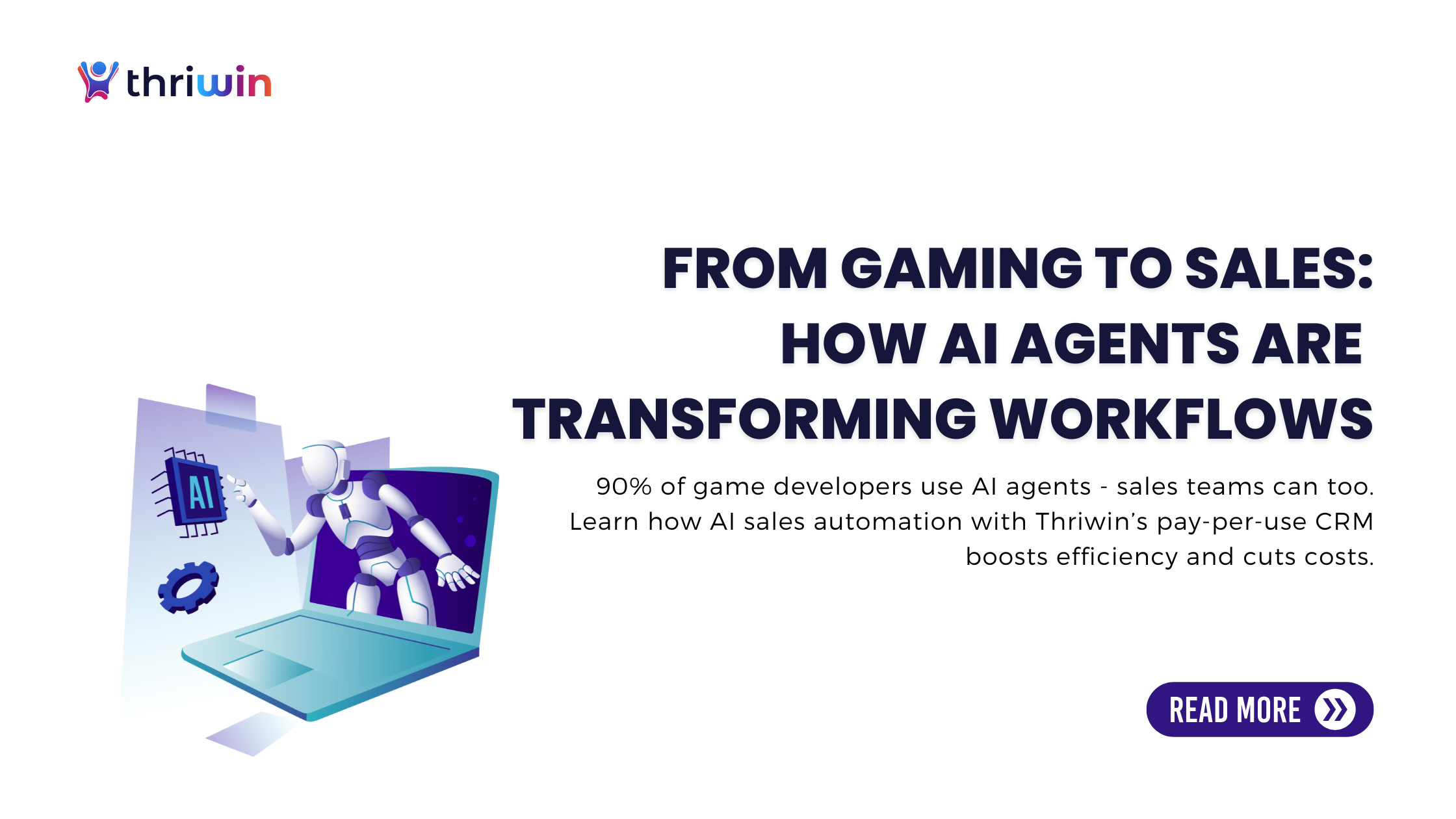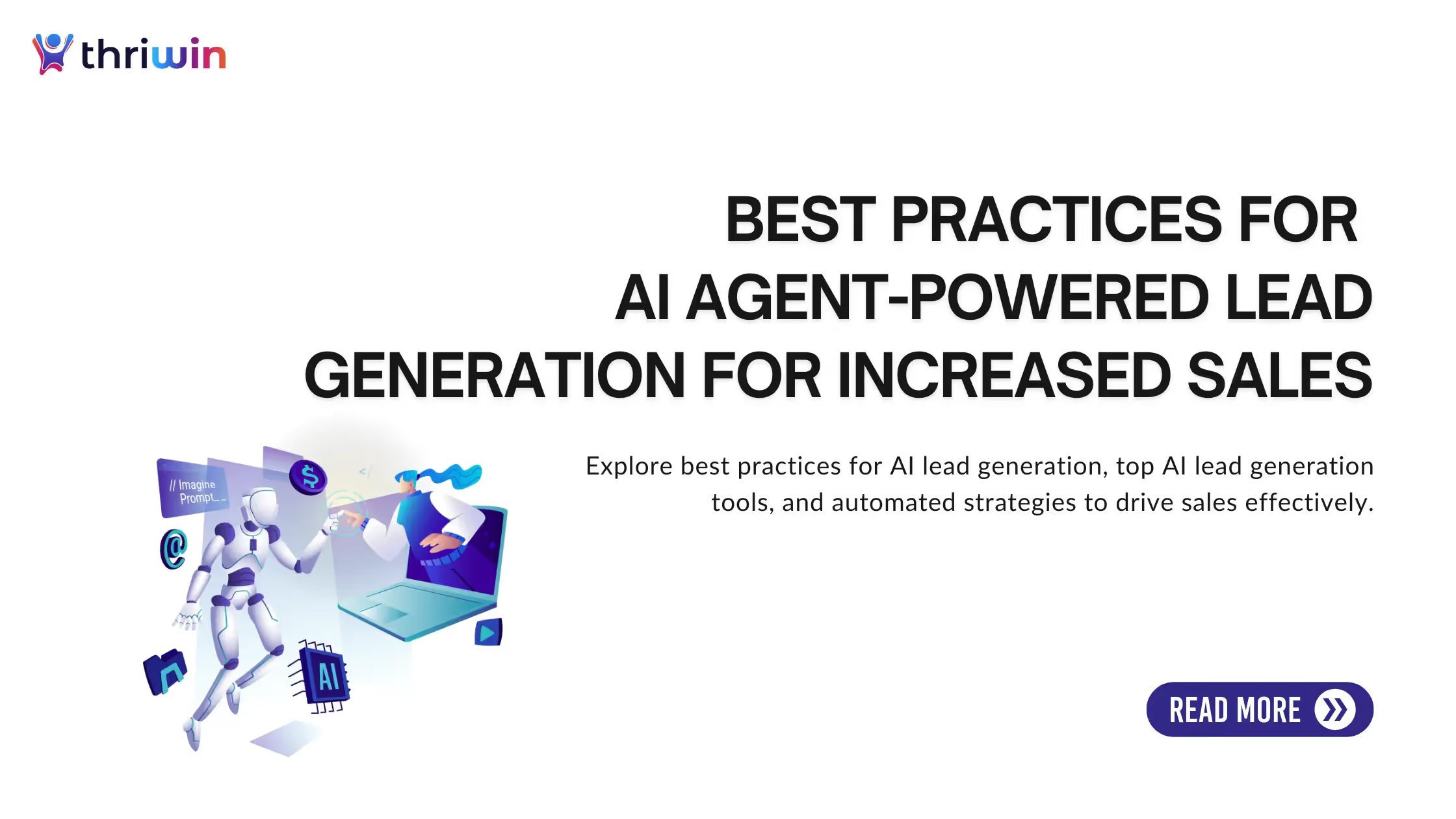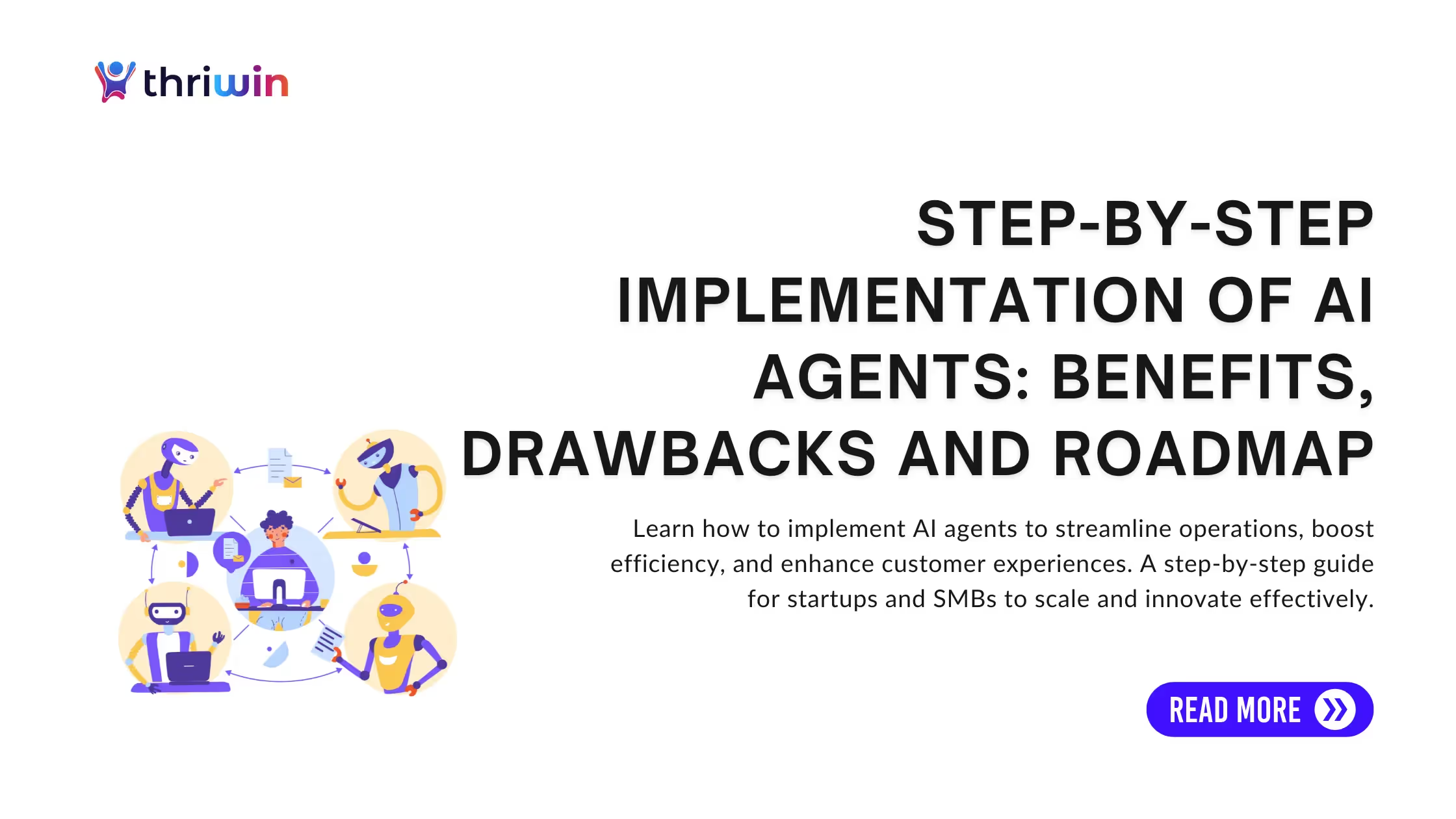In the gaming world, artificial intelligence has already secured a starring role. Nearly nine out of ten game developers now use AI agents to power everything from automated testing to non-player character (NPC) behaviour. These agents handle repetitive work, leaving developers free to focus on creativity and innovation. In short, AI has become the invisible assistant driving efficiency and imagination in gaming.
The sales world, however, tells a different story. Despite being a field where time and efficiency are just as critical, the adoption of AI agents remains limited. Most companies rely on traditional customer relationship management (CRM) systems with some AI features bolted on, but the true potential of AI agents in sales remains untapped.
This lag represents a significant missed opportunity. Sales teams are under increasing pressure to do more with less, fewer resources, tighter budgets, and higher expectations. Just as gaming has shown, the future belongs to industries that use AI not as a gimmick, but as a genuine partner in productivity. With AI, the potential for growth and scalability is limitless, offering a bright future for sales teams.
Let us explore how AI agents transformed gaming, what lessons sales leaders can borrow, and how pay-per-use AI CRMs like Thriwin are rewriting the rules of sales automation.
AI Agents Are Already Mainstream in Gaming
Why Gaming Leads the Adoption Curve
Game studios have long been early adopters of technology. For them, speed and quality are non-negotiable: a single bug can ruin a player’s experience, while delays in releasing patches or expansions can frustrate entire communities. Testing, fixing, and iterating quickly is therefore vital, but also tedious and resource-intensive.
That’s where AI agents make the difference. They can:
- Automate repetitive testing of builds and features.
- Generate adaptive NPC behaviour that feels more lifelike.
- Assist creative workflows by producing variations in dialogue, environment design, and quests.
- Reduce overhead by running simulations faster than human testers could manage.
The impact is undeniable. 87% of gaming studios report already using AI agents, and 94% expect measurable cost savings. For developers, AI is not a novelty. It’s part of the production pipeline, a silent partner that enables creativity to thrive.
A Lesson Beyond Gaming
The key insight here is that AI agents do not replace human creativity. Instead, they amplify it. When freed from mundane work, developers innovate faster and produce richer experiences. The same principle applies to sales: AI can take on the repetitive “grind” while sales reps focus on what they do best, building trust and closing deals. This relief from repetitive tasks can significantly reduce the burden on sales teams.
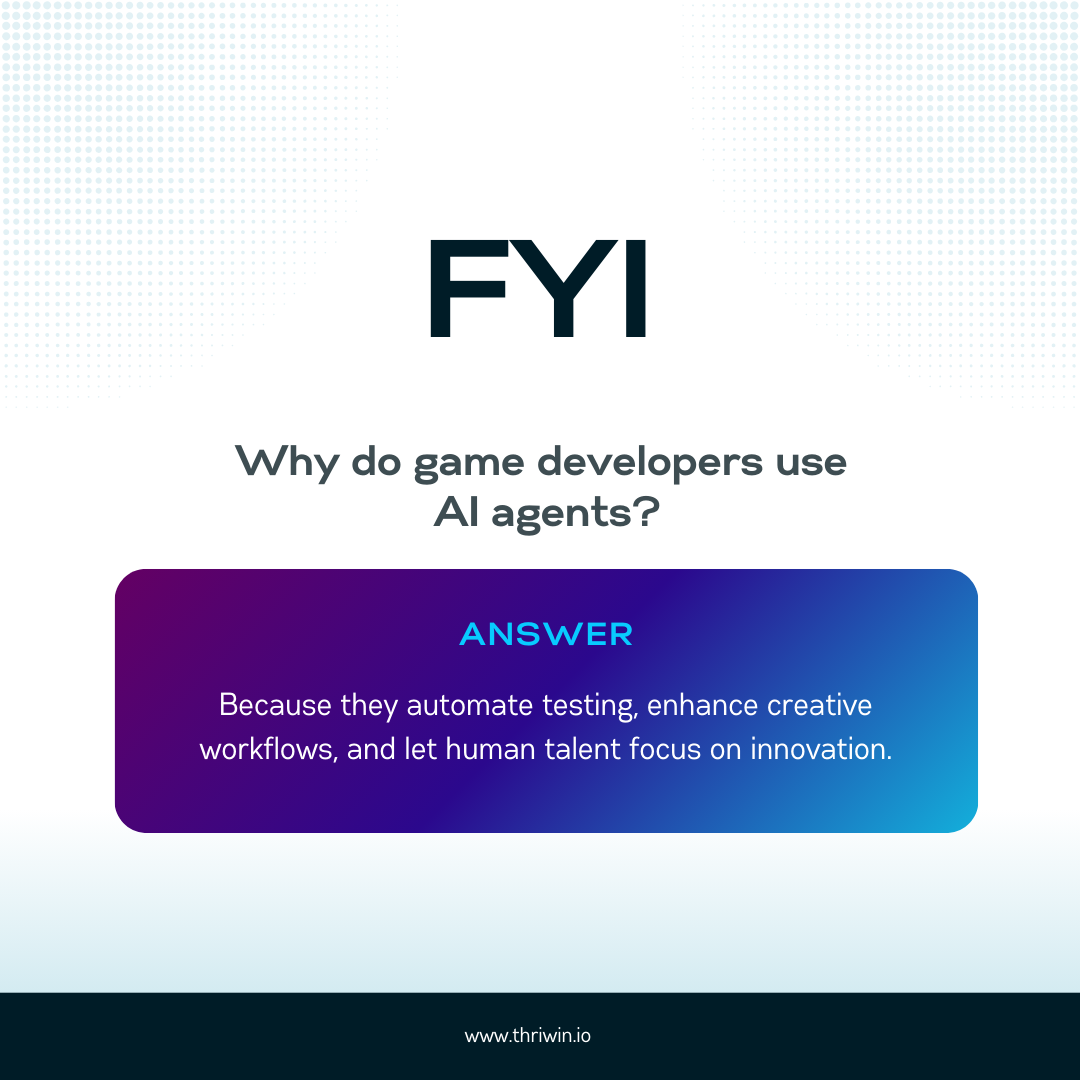
What Sales Teams Can Learn from Gaming
Parallel Challenges in Different Worlds
At first glance, game development and sales couldn’t seem more different. One builds virtual worlds; the other chases real-world revenue. But dig deeper, and the pain points align.

- Game development struggles: debugging, coding loops, endless manual quality checks.
- Sales struggles: manual CRM entry, repetitive outreach, and constant pipeline updates.
In both cases, highly skilled professionals are spending disproportionate time on low-value tasks. The result? burnout, inefficiency, and lost opportunities.
The Takeaway for Sales
The gaming industry embraced AI early and reaped efficiency gains. Sales teams can do the same. By letting AI agents handle grunt work, reps regain time for relationship-building and strategic selling. Just as game developers no longer waste energy on repetitive bug testing, sales professionals shouldn’t waste hours logging calls or sending the same follow-up email 50 times.
How AI Agents Transform Sales Teams
Once deployed in sales, AI agents change workflows at every level. Here’s how:
Smarter Outreach
Traditional cold outreach is a numbers game. Send 100 emails, hope 2 get a response. With AI, outreach becomes targeted and personalised at scale. Agents can design sequences across email, calls, and even personalised landing pages, delivering the right message to the right person at the right time.
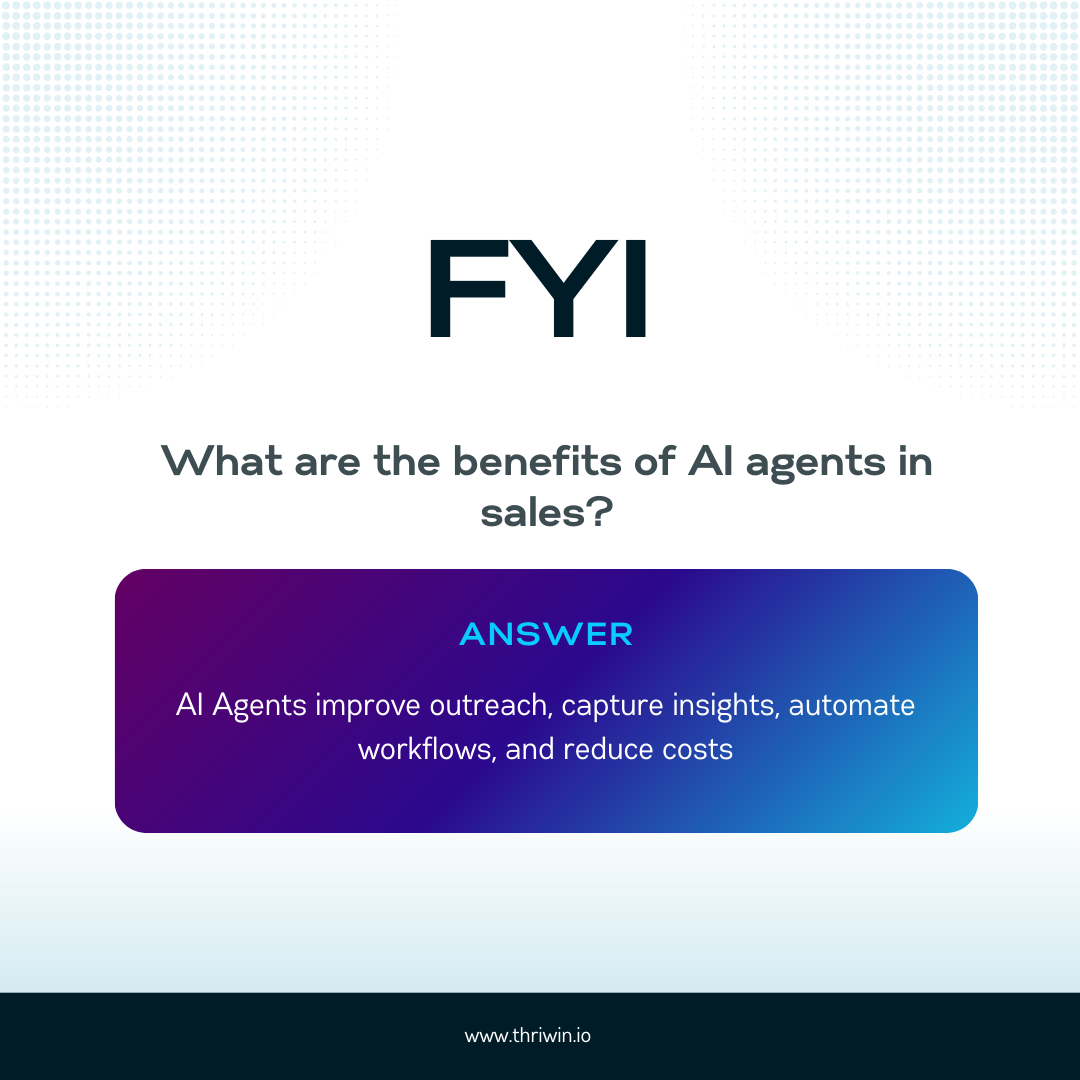
For example, instead of blasting the same template, an AI agent can send tailored content to different buyer personas, reference recent company news, and optimise send times for engagement—the result: higher open rates, better responses, and warmer leads.
Conversation Intelligence
In a typical sales cycle, valuable insights are often lost in meetings and calls. AI changes that. Agents can:
- Record and transcribe calls in real-time.
- Highlight objections, action points, and competitor mentions.
- Automatically schedule follow-ups.
This prevents opportunities from slipping through the cracks and allows reps to stay focused on building rapport.
Workflow Automation
Sales processes involve dozens of micro-tasks: entering data into CRMs, updating deal stages, creating reminders, and scheduling meetings. AI agents can take over these tasks seamlessly. Managers, in turn, gain real-time pipeline visibility, making forecasting and decision-making more accurate.
Cost & Efficiency Gains
The most tangible benefit is financial. With AI agents:
- Teams can scale without adding headcount.
- Sales development costs drop.
- Agents work 24/7, without fatigue.
The combination leads to lower customer acquisition costs (CAC) and faster sales cycles, providing a clear competitive advantage. This empowerment and being ahead of the curve can significantly boost the morale of sales teams.
Why Pay-Per-Use AI CRM Is the Future
The Problem with Subscription Fatigue
Traditional SaaS CRMs charge hefty subscription fees, often with long-term contracts. Many companies pay for features or seats they never use, creating “subscription fatigue.” For lean sales teams, this model is both inflexible and wasteful.
Enter Pay-Per-Use
A pay-per-use CRM eliminates that problem. Instead of paying a flat monthly fee, companies are billed based on usage. That means:
- Lower upfront risk.
- Scalable costs that grow only as the team grows.
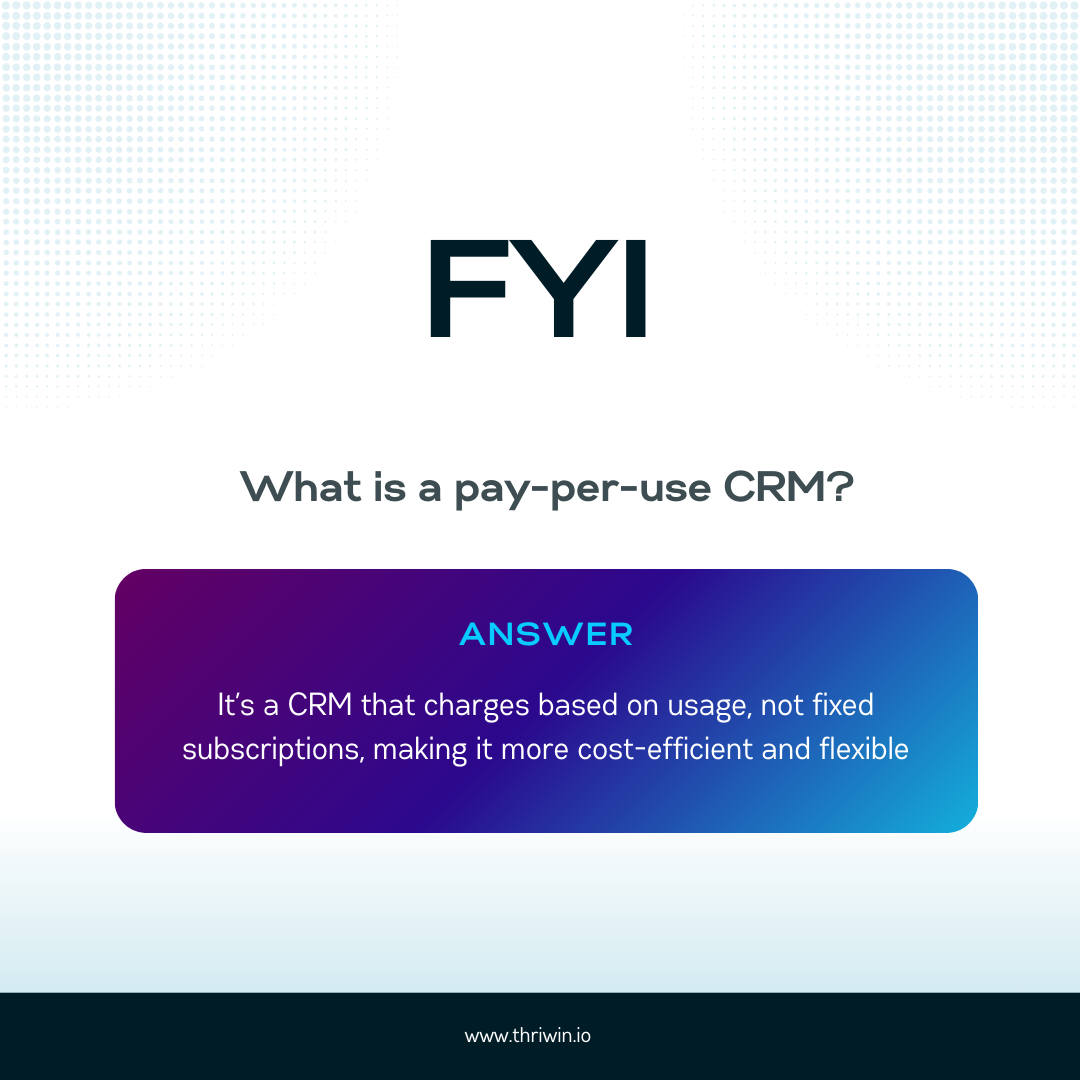
Why Thriwin Is Different
Thriwin takes it further by being AI-first, not AI-add-on. Most CRMs retrofit AI into existing platforms. Thriwin was designed around automation from the ground up, delivering:
- Transparent, usage-based pricing.
- AI agents are integrated into outreach, conversation intelligence, and pipeline management.
- Scalability from startup teams to enterprises.
5 Steps to Get Started with AI Sales Agents
Implementing AI into a sales workflow doesn’t need to be overwhelming. Many leaders imagine a complete system overhaul, but in reality, successful adoption happens in small, measurable steps. Below is a practical roadmap to introduce AI sales agents into your organisation without disrupting existing processes.
Step 1: Audit Your Sales Process in Detail
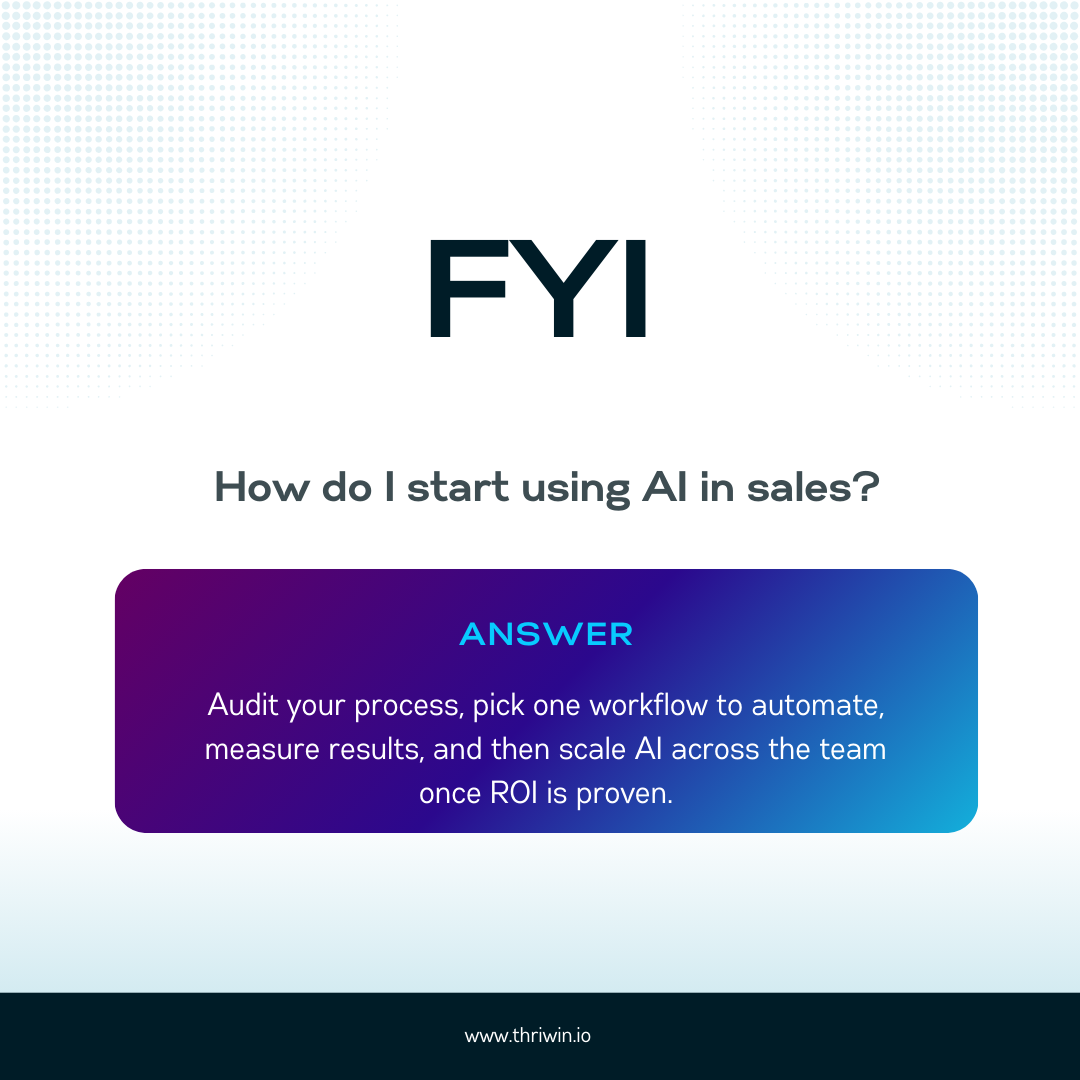
Before introducing AI, you need clarity on where the time sinks are. Start by mapping your team’s current workflow from lead generation to deal closure. Ask:
- How much time is spent on manual data entry (logging calls, updating deal stages)?
- How many hours go into repetitive follow-ups (emails, reminders, check-ins)?
- Are valuable insights from conversations being captured consistently, or are they lost in notes and memory?
- Where do bottlenecks occur,e.g., slow handovers between SDRs and AEs, or delayed reporting for managers?
Documenting these answers reveals the tasks best suited for automation. For instance, if your SDR team spends 20% of its time just updating CRM fields, that’s a clear case where an AI agent could handle the job instantly.
👉 Pro tip: Use a simple time-tracking exercise across your team for one week. The data will highlight how much human effort is being drained by routine admin work.
Step 2: Choose the Right AI CRM Platform
Not all CRMs are built equally when it comes to AI. Some legacy tools market “AI features,” but in reality, they are surface-level add-ons like basic predictive scoring.
When selecting a platform, prioritise AI-first CRMs that were built with automation at their core. Look for:
- Outreach automation: Can the AI generate and send personalised campaigns across email, calls, and landing pages?
- Conversation intelligence: Does it transcribe calls, extract insights, and recommend next steps?
- Workflow automation: Can it schedule meetings, update pipelines, and send reminders automatically?
- Flexible pricing: Does it offer pay-per-use rather than forcing fixed-seat licenses?
For example, a growing startup may not need (or be able to afford) 20 full CRM seats. A pay-per-use AI CRM ensures the business pays only for what’s used, making it cost-efficient while still delivering enterprise-grade features.
Step 3: Start Small and Target One Workflow
One of the biggest mistakes companies make is trying to automate everything at once. This often overwhelms teams and creates resistance to change. Instead, start with a single, high-impact workflow.
The most common entry point? Cold email outreach.
Instead of SDRs sending hundreds of generic emails manually, an AI agent can:
- Personalise subject lines and messaging based on prospect data.
- Optimise send times for higher open rates.
- Automatically follow up with prospects who don’t respond.
This single workflow can save dozens of hours per week while delivering better engagement results. Once the team sees tangible improvements, it becomes easier to expand automation into calls, scheduling, and pipeline management.
Step 4: Measure Results and Optimise
AI adoption is not “set it and forget it.” To justify scaling, you need to prove the ROI.
Key metrics to track include:
- Email open and response rates. Are campaigns performing better with AI?
- Meetings booked. Are SDRs spending more time in conversations that matter?
- Sales cycle length. Is the average time to close shortening?
- Cost savings. Are fewer SDRs able to achieve the same pipeline growth?
Review these metrics after the first month of automation. Where AI is underperforming, adjust the inputs (e.g., refine lead lists or messaging). Where it excels, double down.
👉 Example: A startup that implemented AI outreach saw response rates jump from 3% to 12%. That’s a 4x improvement in lead engagement, providing sufficient evidence to expand AI into other workflows.
Step 5: Scale Across the Entire Sales Team
Once a single workflow shows success, it’s time to scale. This doesn’t just mean giving everyone access; it means embedding AI agents into every stage of the pipeline.
- Lead generation: AI scrapes, qualifies, and prioritises leads based on fit.
- Outreach: Campaigns run across multiple channels with personalised messaging.
- Call handling: Every conversation is captured, transcribed, and analysed for insights.
- Pipeline tracking: AI updates deal stages and flags stalled opportunities.
- Forecasting: Managers get real-time dashboards powered by clean, AI-updated data.
At this stage, the sales team begins operating like a hybrid workforce, humans focusing on relationships and strategy, while AI agents handle the repetitive, process-driven work.
The result? A leaner, a more efficient sales machine that achieves more with fewer resources.
Conclusion: The Future of Sales Is AI-Powered
The gaming industry has already proven that AI agents are not just hype; they deliver real, measurable ROI. Developers no longer waste hours on repetitive tasks, and the quality of games has improved because talent is focused on creativity, not busywork.
Sales teams now stand at the same crossroads. The benefits of adopting AI are clear: more innovative outreach, more effective conversations, faster deal cycles, and reduced costs. Companies that embrace AI agents today will gain a competitive advantage; those that wait risk falling behind.
At Thriwin, we built our CRM to solve precisely this challenge. Unlike legacy platforms with AI bolted on, Thriwin is AI-first, pay-per-use, and built to scale with your business. It eliminates wasted subscriptions and delivers enterprise-grade automation at startup-friendly costs.
Ready to see AI agents in action? Explore Thriwin’s AI-powered CRM today and discover how to scale smarter, faster, and more cost-effectively.
FAQs
What are AI sales agents?
AI sales agents are intelligent software tools designed to automate repetitive sales tasks such as email outreach, call transcription, CRM updates, and pipeline management. They operate 24/7, ensuring no lead or task falls through the cracks.
Do AI agents replace salespeople?
No. AI agents don’t replace humans; they free them. By taking over routine admin work, AI allows sales representatives to spend more time on strategic sales activities, relationship-building, and closing deals.
How do AI agents save costs in sales?
By automating repetitive work, AI reduces the need for large SDR teams, shortens deal cycles, and ensures more consistent pipeline management. This results in lower costs for customer acquisition and higher efficiency.
Is AI in sales expensive?
It doesn’t have to be. Traditional CRMs often add AI as a premium feature, driving up costs. In contrast, pay-per-use AI CRMs like Thriwin make adoption risk-free and affordable, charging only for what’s used.
What’s the first workflow I should automate with AI?
Most teams start with outreach, automating cold email campaigns, follow-ups, and lead prioritisation. This provides quick wins and visible ROI, which helps secure buy-in from the team.
%201.svg)


